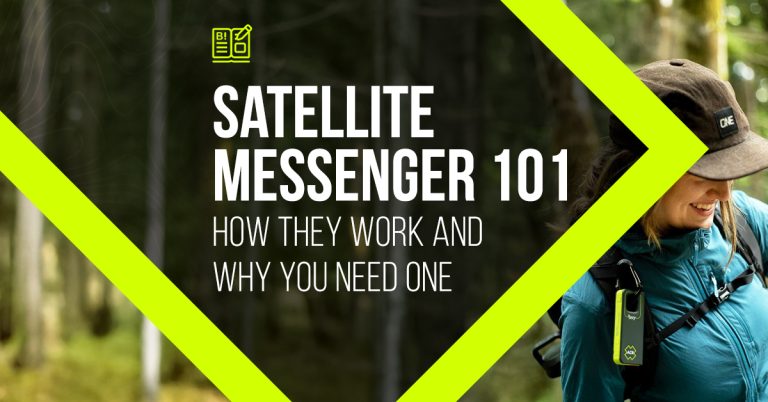
Satellite Messenger 101: How They Work and Why You Need One
Posted on March 20, 2025
Staying connected in remote areas has always been a challenge. Whether you’re hiking deep in the mountains, sailing offshore, or overlanding through the desert, traditional cell service is often unreliable—or nonexistent. This is where satellite messengers come in. These compact, life-saving devices allow you to communicate beyond the reach of cell towers, ensuring you can send messages, share your location, and even utilize one-touch SOS functionality for two-way emergency communication.
In this guide, we’ll break down how satellite messengers work, why you might need one, and how they can enhance safety for outdoor adventurers, travelers, and professionals alike.
How Do Satellite Messengers Work?
Unlike cell phones, which rely on terrestrial cell towers, satellite messengers communicate directly with satellites orbiting the Earth. These satellites relay signals to ground stations, which then send messages or emergency alerts to the intended recipient.
There are two main types of satellite networks that messengers use:
- Geostationary Satellites (GEO): These satellites remain fixed above the equator and provide consistent coverage in certain areas. They work well in open spaces but may struggle in deep canyons or polar regions.
- Low Earth Orbit Satellites (LEO): These satellites move in orbits closer to Earth and provide global coverage, making them more reliable for users in remote or obstructed locations.
Most satellite messengers require a subscription plan to access messaging, tracking, and SOS features. The cost varies based on the level of service, message limits, and coverage area.
Key Features of Satellite Messengers
- Two-Way Messaging: Unlike traditional emergency beacons, many satellite messengers allow you to send and receive text messages, keeping you in touch with family, friends, or emergency responders.
- SOS & Emergency Assistance: A built-in SOS button connects users to emergency response services like Global Rescue, ensuring help is dispatched when needed.
- GPS Tracking & Location Sharing: Users can share their real-time location with others, making it easier for loved ones to track their journey or for search and rescue teams to locate them.
- Weather Forecasting: Some devices provide weather updates based on satellite data, helping adventurers make informed decisions about their routes.
- Navigation & Mapping: Advanced models include topo maps, waypoint marking, and even route planning features to assist in navigation.
Why You Need a Satellite Messenger
- For Outdoor Adventures
Hikers, backpackers, climbers, hunters, and many other types of outdoor enthusiasts often travel through areas without cell service. A satellite messenger ensures they can check in with loved ones, get weather updates, and get help if needed.
- For Boating and Offshore Travel
Sailors and anglers heading offshore can stay connected even when far from land. In case of an emergency, they can send an SOS signal, providing their exact coordinates to rescuers.
- For Overlanding and Off-Roading
Off-roaders and overlanders exploring remote regions can use satellite messengers to communicate with fellow travelers and seek help if they encounter vehicle trouble.
- For Emergency Preparedness
Natural disasters can disrupt cellular networks, leaving people stranded without communication. A satellite messenger provides a reliable way to contact friends and family or emergency services if necessary.
- For Remote Workers and Researchers
Professionals working in remote areas—such as field researchers, conservationists, or construction crews—benefit from satellite messengers by staying in contact with their teams and reporting data from the field. An excellent unique Enterprise Solution is the Bivy Stick MESH which includes both satellite communication and LoRa® Enabled Mesh Radio Communication.
Choosing the Right Satellite Messenger
When selecting a satellite messenger, consider the following:
- Coverage: Does it offer global or regional coverage?
- Two-Way Messaging: Can you receive replies, or is it one-way only?
- Battery Life: How long does the device last on a single charge?
- Subscription Costs: Are the monthly fees within your budget?
- Additional Features: Do you need mapping, weather updates, or Bluetooth connectivity?
Take the considerations above into account if interested in ACR’s Bivy Stick Satellite Messenger.
Satellite messengers are more than just gadgets; they are essential safety tools for anyone venturing beyond the reach of cell service. Whether you’re a weekend adventurer, a professional working in remote areas, or someone preparing for emergencies, having a satellite messenger can provide peace of mind and, more importantly, a lifeline when it matters most. Before your next adventure, consider investing in a satellite messenger—it might just save your life.